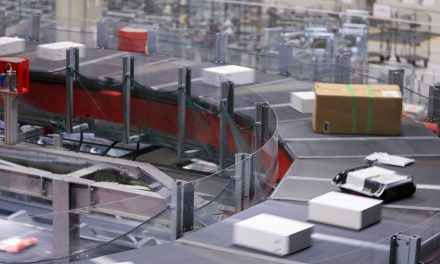
Cost reductions bring 29% profit boost at Norway Post
Norway Post said today that cost-cutting and improvements to its business have helped operating profits surge 29% in the first half of the year. Further changes are on the way, particularly in logistics and the retail division, where nearly 1,000 jobs could go, the company said today.
Releasing its latest financial results for the first two quarters of 2012, Norway Post said it managed to stabilise revenues at a similar level to the first half in 2011, bringing in NOK 11.3bn ($1.9bn USD) during the six months to the end of June.
Operating profit before one-off costs and amortization (EBIT) was NOK 381m ($65.3m) for the half.
One of the biggest factors in the company’s improved profitability has been its cost-cutting measures and efficiency improvements, which have now reduced the company’s operating costs by NOK 2.6bn ($446m) a year since 2008.
During the latest six months, Norway Post has seen a continuing decline in its addressed letter volumes, which fell 6% during the six months, compared to the same period last year. Periodical volumes also dropped during the half, but unaddressed advertising volumes increased by 4.6% year-on-year.
The company has been investing in the logistics side of its business, and also sees potential for growth in parcels, thanks to Internet shopping. However, during this half the company’s parcel volumes dropped 4.4% compared to the first half of 2011, although parcel volumes entering Norway did increase.
Income from logistics customers based outside Norway accounted for 27.7% of revenues in the first half, up 0.4% from the same period last year.
Commenting on the results, Norway Post chief executive Daj Mejdell said: “The Post’s business is distinguished by restructuring and efficiency, which is strengthening us against our competition. This work continues unabated while we continue our growth in logistics.”
Mail volumes
Norway Post said the reduction in mail volumes remain its “biggest challenge”, having lost a third of addressed mail volume since the year 2000, the company forecasts as much as two thirds of the volume will be gone by 2018.
However, the company did suggest there was still potential in advertising and parcels, with a recent TNS Gallup poll suggesting nine in 10 householders still check their mailboxes every day, and said it is working to encourage new content for the mail. This will likely include more small ecommerce purchases and the development of its new product sample service.
The company said it was expecting businesses and government to shift their communications towards digital channels, for which it has developed its year-old Digipost platform. Digipost already has more than 200,000 registered users.
“The mailbox has a place in the future, but will get a new content,” said Mejdell. “We see growth opportunities particularly for items purchased online and delivered by mail. Important documents from both public and private senders will shift to the digital mailbox, Digipost.”
In the logistics segment, Norway Post said its profit performance was affected by “intense competition” during the half, along with an increase in transportation costs, while the unsettled economic situation in Europe has also affected the business.
The company said a “comprehensive” efficiency programme has now been launched to seek operational savings and synergies between its mail, parcels and freight divisions.
Retail
Also during the half, Norway Post said it moved a further 149 post offices to in-store facilities as Norway’s Parliament approved further restructuring of the retail division. It will leave Norway Post with only around 30 in-house post offices, along with 1,400 sub-contracted postal counters.
The company has NOK 324m ($55.6m) set aside for the transformation programme, and believes once the project is complete by the end of 2014 it will have a NOK 200m ($34.3m) a year benefit.
As another tender for providing in-store postal services is set to go out next month, Norway Post said today it believes nearly 1,000 jobs employees will be affected by the changes.
“We will actively work to provide new jobs,” executives promised.












